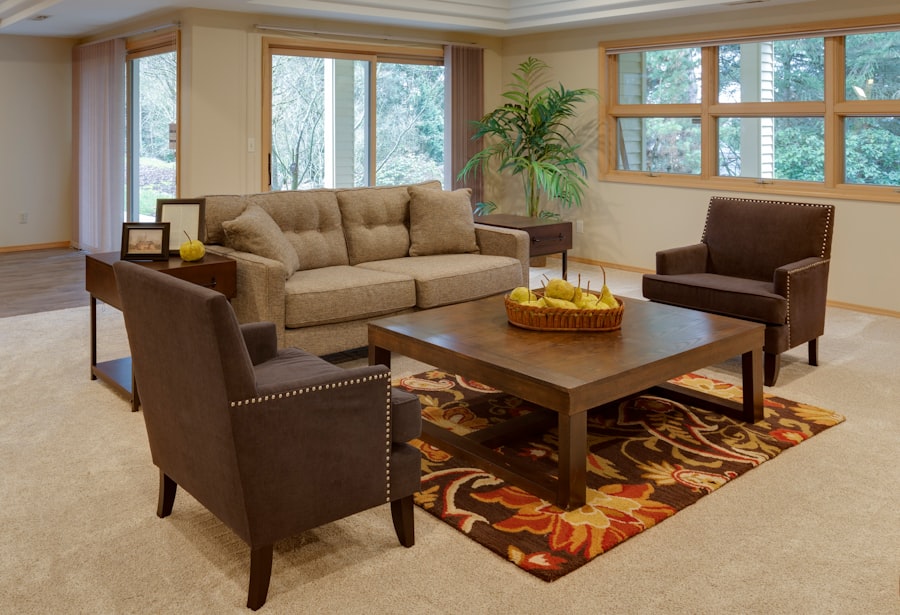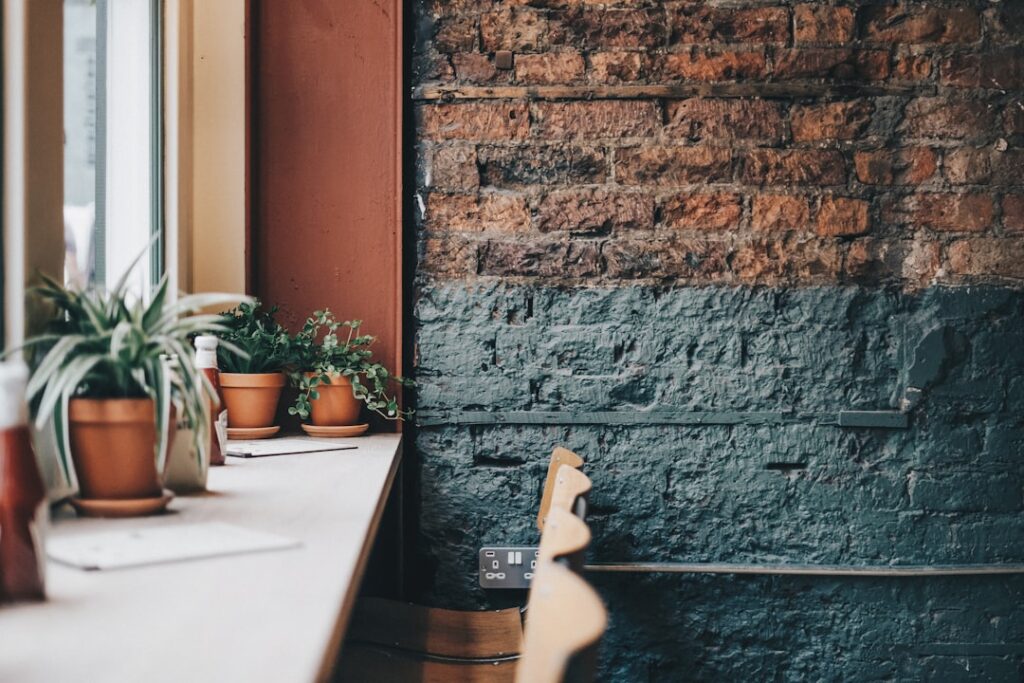Modern interior design is a dynamic and evolving field that reflects contemporary lifestyles and values. It is characterized by clean lines, open spaces, and a focus on functionality. This design philosophy emerged in the early 20th century, influenced by movements such as Bauhaus and mid-century modernism, which emphasized simplicity and the idea that form should follow function.
Today, modern interior design continues to evolve, incorporating new materials, technologies, and cultural influences. It often embraces a minimalist aesthetic, stripping away unnecessary ornamentation to create spaces that feel both spacious and serene. The essence of modern design lies in its ability to adapt to the needs of the inhabitants while maintaining a cohesive visual language.
In addition to its aesthetic qualities, modern interior design also prioritizes the use of innovative materials and sustainable practices. Designers are increasingly aware of the environmental impact of their choices, leading to a rise in the use of eco-friendly materials and energy-efficient solutions. This shift not only enhances the sustainability of modern homes but also contributes to healthier living environments.
Furthermore, modern design often incorporates elements of biophilia, which emphasizes the connection between humans and nature. By integrating natural light, greenery, and organic materials into interior spaces, modern design fosters a sense of well-being and tranquility. Understanding these principles is essential for anyone looking to create a modern home that is both stylish and functional.
Key Takeaways
- Modern interior design focuses on clean lines, minimalism, and functionality.
- Choose furniture that is sleek, simple, and functional to complement a modern home.
- Minimalist elements such as decluttering, simple color palettes, and natural light can create a stylish modern look.
- Maximize space in a modern home with multifunctional furniture pieces like storage ottomans and wall-mounted desks.
- Use neutral colors and textures like white, gray, and wood to create a modern aesthetic in your home.
Choosing the Right Furniture for a Modern Home
Creating a Balanced Space
Selecting furniture for a modern home involves more than just aesthetics; it requires a thoughtful approach that balances style, comfort, and functionality. When choosing furniture, it is crucial to consider the scale and proportion of each piece in relation to the overall space. Modern design often favors furniture with sleek lines and geometric shapes, which can create a sense of harmony within an open floor plan.
Maximizing Utility and Style
Additionally, opting for multifunctional pieces can maximize utility without compromising on style. For instance, a coffee table that doubles as storage or a sofa bed can provide practical solutions for smaller spaces while maintaining a modern aesthetic. This approach allows homeowners to make the most of their space without sacrificing style.
Choosing the Right Materials
Another important aspect of selecting furniture is the material used in its construction. Modern design often incorporates materials such as metal, glass, and wood, each contributing to a unique visual appeal. For example, a glass dining table can create an illusion of space while allowing light to flow freely throughout the room. Similarly, wooden furniture can add warmth and texture, creating a balance between sleek modernity and inviting comfort.
Curating a Functional and Aesthetically Pleasing Space
When curating furniture for a modern home, it is essential to consider not only how each piece looks but also how it feels and functions within the space. By thoughtfully selecting furniture that aligns with modern design principles, homeowners can create an environment that is both aesthetically pleasing and highly functional.
Incorporating Minimalist Elements for a Stylish Look

Minimalism is a cornerstone of modern interior design, emphasizing simplicity and the elimination of excess. By incorporating minimalist elements into a home, one can achieve a stylish look that feels both sophisticated and uncluttered. This approach encourages homeowners to focus on quality over quantity, selecting fewer pieces that are well-crafted and meaningful rather than filling spaces with numerous items.
A minimalist aesthetic often features neutral color palettes, clean lines, and open spaces that allow for easy movement and flow. This not only creates a visually appealing environment but also promotes mental clarity by reducing visual distractions. In addition to aesthetics, minimalism also encourages intentionality in design choices.
Each element within a minimalist space should serve a purpose or evoke an emotional response. This could mean choosing artwork that resonates personally or selecting furniture that enhances comfort without overwhelming the senses. Furthermore, minimalist design often incorporates negative space—areas devoid of objects—that allows the eye to rest and creates a sense of balance within the room.
By embracing these principles, homeowners can cultivate an atmosphere that feels serene and inviting while showcasing their personal style through carefully curated elements.
Maximizing Space with Functional Furniture
In modern interior design, maximizing space is essential, especially in urban environments where square footage can be limited. Functional furniture plays a pivotal role in achieving this goal by providing practical solutions that enhance usability without sacrificing style. For instance, modular furniture systems allow homeowners to customize their layouts according to their needs, making it easy to adapt spaces for different activities or gatherings.
Additionally, furniture with built-in storage options—such as ottomans with hidden compartments or beds with drawers—can help keep clutter at bay while maintaining an organized appearance. Moreover, the strategic placement of furniture can significantly impact how space is perceived. Arranging pieces to create distinct zones within an open floor plan can enhance functionality while promoting social interaction.
For example, using area rugs to define seating areas or placing bookshelves as room dividers can create a sense of intimacy without closing off the space entirely. By prioritizing functional furniture and thoughtful arrangements, homeowners can make the most of their living areas while ensuring that each piece contributes to the overall aesthetic and purpose of the home.
Using Neutral Colors and Textures for a Modern Aesthetic
Neutral colors are fundamental in achieving a modern aesthetic, as they provide a versatile backdrop that allows other design elements to shine. Shades such as whites, grays, beiges, and taupes create a calming environment that promotes relaxation and focus. These colors can be used throughout various elements in a home—from walls and flooring to furniture and accessories—creating a cohesive look that feels both sophisticated and timeless.
Additionally, neutral palettes offer flexibility when it comes to incorporating accent colors or bold patterns through textiles or artwork, allowing homeowners to express their individuality without overwhelming the space. Textures also play a crucial role in enhancing the visual interest of neutral color schemes. By layering different materials—such as soft textiles, sleek metals, and natural woods—homeowners can create depth and dimension within their interiors.
For instance, pairing a plush wool rug with smooth leather furniture can add warmth while maintaining a modern edge. Similarly, incorporating textured wall finishes or decorative elements like woven baskets can introduce tactile variety that invites touch and engagement. By thoughtfully combining neutral colors with diverse textures, homeowners can achieve a modern aesthetic that feels inviting and dynamic.
Incorporating Smart Technology for Convenience

Enhancing Comfort and Sustainability
The integration of smart technology into modern interior design has revolutionized how we interact with our living spaces. Smart home devices offer convenience and efficiency by allowing homeowners to control various aspects of their environment through their smartphones or voice commands. From smart lighting systems that adjust brightness based on time of day to thermostats that learn user preferences for optimal energy savings, these technologies enhance comfort while promoting sustainability.
Smart Security for Peace of Mind
Moreover, smart security systems provide peace of mind by enabling remote monitoring of homes through cameras and alarms. This added layer of security allows homeowners to feel safe and secure, even when they’re not physically present.
Blending Technology with Aesthetics
In addition to practical benefits, smart technology can also contribute to the overall aesthetic of modern interiors. Many devices are designed with sleek lines and minimalist profiles that seamlessly blend into contemporary spaces without detracting from their visual appeal. For example, smart speakers can be discreetly placed on shelves or countertops while providing high-quality sound for music or podcasts. Furthermore, integrating technology into home entertainment systems allows for streamlined setups that eliminate clutter from wires and cables.
Creating a Cozy and Inviting Atmosphere with Modern Furniture
While modern interior design often emphasizes minimalism and sleek lines, it is entirely possible to create a cozy and inviting atmosphere within this framework. The key lies in selecting furniture that balances comfort with contemporary style. Plush sofas with soft upholstery invite relaxation while maintaining clean silhouettes that align with modern aesthetics.
Additionally, incorporating layered textiles—such as throw blankets and decorative pillows—can add warmth and texture to seating areas without overwhelming the space visually. Lighting also plays an essential role in establishing a cozy ambiance in modern interiors. Utilizing multiple light sources—such as floor lamps, table lamps, and wall sconces—can create a warm glow that enhances comfort during evening hours.
Dimming options allow homeowners to adjust brightness levels according to mood or activity, further contributing to an inviting atmosphere. By thoughtfully curating furniture choices alongside lighting solutions, homeowners can cultivate spaces that feel both stylish and welcoming—a perfect blend of modernity and comfort.
Incorporating Sustainable and Eco-Friendly Furniture in a Modern Home
As awareness of environmental issues continues to grow, many homeowners are seeking ways to incorporate sustainable practices into their interior design choices. One effective approach is selecting eco-friendly furniture made from responsibly sourced materials or recycled components. For instance, furniture crafted from reclaimed wood not only reduces waste but also adds character and history to modern interiors.
Additionally, many manufacturers are now producing pieces using sustainable materials such as bamboo or certified hardwoods that minimize environmental impact while offering durability. Beyond material choices, sustainable furniture often emphasizes craftsmanship and longevity over fast fashion trends. Investing in high-quality pieces ensures that they will withstand the test of time both in terms of style and functionality.
Furthermore, many eco-friendly brands prioritize ethical manufacturing processes that support fair labor practices and reduce carbon footprints. By incorporating sustainable furniture into their homes, homeowners not only contribute positively to the environment but also create spaces that reflect their values while maintaining a chic modern aesthetic.
If you’re interested in the latest trends in office design, you might find the article on modern office design trends particularly enlightening. It covers various aspects of contemporary office aesthetics and functionality, helping you understand how to create a workspace that not only looks good but also enhances productivity. For more detailed insights, you can read the full article here.
FAQs
What is interior design?
Interior design is the art and science of enhancing the interior of a space to achieve a healthier and more aesthetically pleasing environment for the people using the space. It involves planning, researching, coordinating, and managing various elements to create a functional and beautiful space.
What is the role of furniture in interior design?
Furniture plays a crucial role in interior design as it not only provides functionality but also contributes to the overall aesthetic of a space. The choice of furniture can greatly impact the look and feel of a room, and it is often used to define the style and theme of the space.
What are the different styles of interior design?
There are various styles of interior design, including modern, contemporary, traditional, minimalist, industrial, Scandinavian, and many more. Each style has its own unique characteristics and elements that define its aesthetic.
How does interior design impact the functionality of a space?
Interior design considers the functionality of a space by carefully planning the layout, flow, and organization of the elements within the space. It aims to create a space that is not only visually appealing but also practical and efficient for its intended use.
What are some popular furniture materials used in interior design?
Popular furniture materials used in interior design include wood, metal, glass, leather, fabric, and plastic. Each material has its own unique properties and can be used to create different looks and styles within a space.


